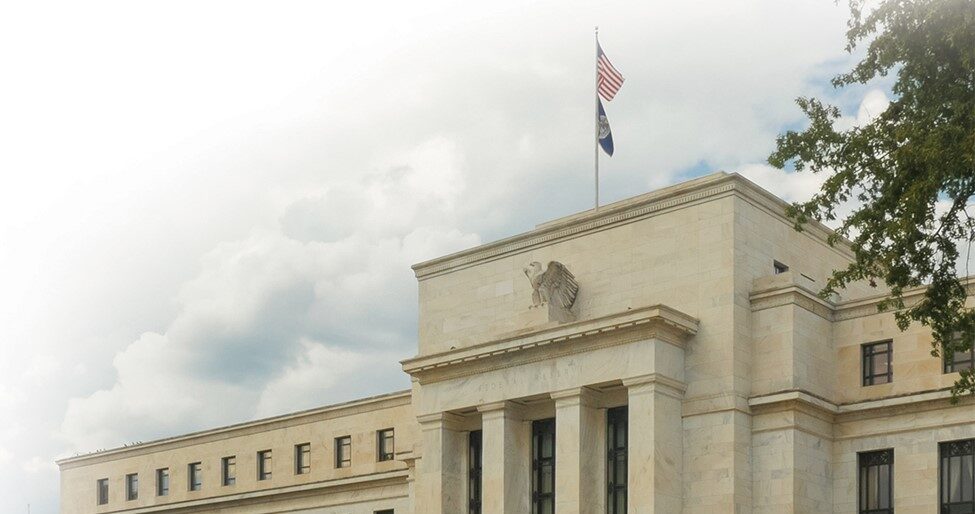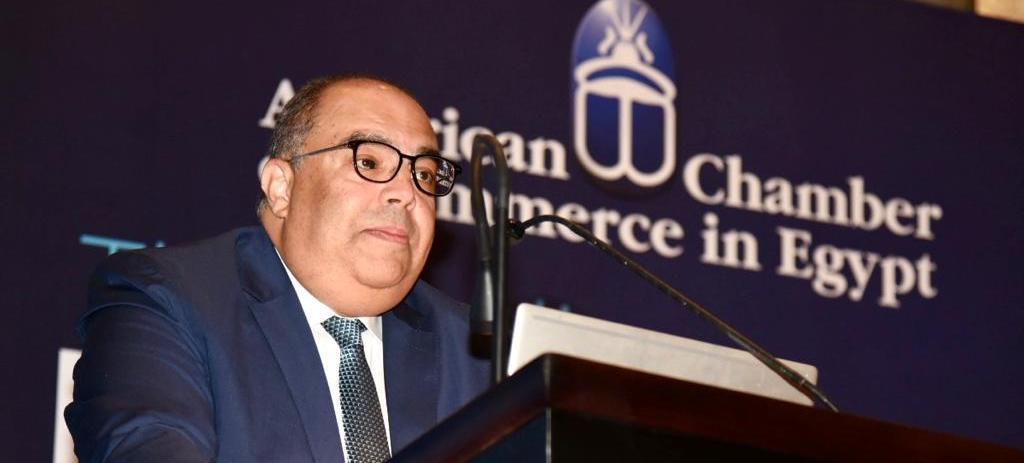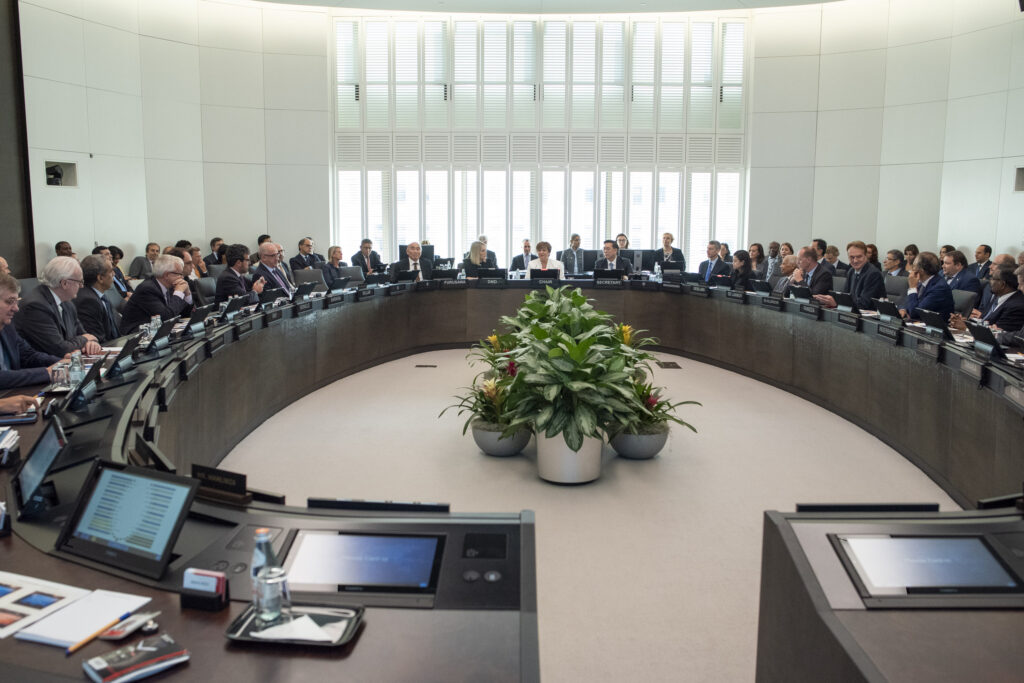When the Federal Reserve (Fed) held overnight interbank rates steady at 5.25% in June, experts said it was a temporary pause. “The Fed ‘skipped’ a rate hike in June in favor of gathering more data,” said Preston Caldwell, a senior U.S. economist at Morningstar Research Services, in July.
As expected, Fed Chair Jerome Powell on July 26 announced a 0.25% hike in overnight interbank interest rates to 5.5%, the highest since 2001.
The possibility of another increase is uncertain. During the July announcement, Powell said, “I would say it’s certainly possible that we will raise funds again … if the data warranted. And I would also say it’s possible that we would choose to hold steady.” Reuters reported in June that the Fed would adopt a “meeting-by-meeting approach.”
For emerging markets, accurately predicting how the Fed might change interest rates over the coming two years is vital to their monetary policies and, ultimately, GDP growth prospects. “The international spillovers associated with … rising interest rates can heighten the likelihood of financial distress in these economies,” said Carlos Arteta, lead economist and head of macroeconomic surveillance at the World Bank, wrote in EconoFact, an online publication, “They are … more damaging in economies with pre-existing vulnerabilities” such as Egypt.
Reasons behind hikes
Arteta said several reasons could push the Fed to raise interest rates, such as unexpected global disruptions that hinder supply chains or political fallout that increases inflation globally or in the United States. “Inflation is the main driver of anxiety in markets and the key catalyst for central bank action in 2022 and 2023,” said the stock-trading platform Capital.com in a May analysis. “The Fed is now at the whim of the greater market forces as it tries to steady the economic ship.”
Over the past two and a half years, the Fed has raised interest rates from 0.25% to 5.5% in response to domestic inflation, which reached a 40-year high of 9.1% in June 2022, exceeding the Fed’s 2% target. The latest figure was 3.2% in July 2023, up from 3% in June.
The Capital.com article explained that the source of the ongoing inflation crisis is a mix of demand and supply factors that were not necessarily interconnected before the COVID-19 pandemic. It got worse after Russia invaded Ukraine in February 2022.
According to Bankrate, a consultancy, inflation is still above the Fed’s target mainly because “its sources have changed.” The Bankrate report noted, “Supply shocks that contributed to rapid food and energy inflation have majorly improved. […] Americans are now dealing with expensive service costs.”
Another reason behind the Fed’s interest rate increases is to attract foreign investors to deposit their cash in U.S. banks. “The greenback’s appeal as a … haven currency, coupled with increased investor attraction thanks to the Fed’s hawkish monetary policy, has helped it outgain most currencies this year.”
The appreciation against other currencies has invariably kept prices of U.S. imports contained. Meanwhile, asserting the dollar’s “safe haven” status helps America contain potential risks from China, Russia and other nations that want to use their currencies in global trade.
Shaping the future
Odeta Kushi, deputy chief economist at First American Financial Corp., a financial service company, believes the U.S. economy conveys mixed messages. “Goods inflation has been declining, and everyone is confident housing inflation will follow,” she told Bankrate in July. “However, recent wage growth, employment, and inflation estimates suggest that services … are still running hot.
“A less than white-hot labor market and slowing service sector wage gains are key to getting the Fed to halt interest rate hikes,” said Kushi. “Our conviction is the Fed’s fight against inflation hasn’t yet reached an inflection point.” That will likely take a long time, Asawari Sathe, a senior economist at Vanguard, an investment adviser, said in a June research note.
Another complication for the Fed is that as inflation inches closer to the 2% target, it becomes more difficult to reduce it. At 3.2% inflation, the United States is “at the point where wringing the last few percentages of inflationary pressures are more difficult,” Bernard Markstien, president and chief economist at Markstein Advisers, told Bankrate in July. “It will take the prolonged effects of the likely coming recession and time for the inflation rate to fall back … close to 2%.”
In June, Michael Derby of Reuters reported Fed officials expect that inflation pressure will take a “few years” to ease. Bank of America CEO Brian Moynihan agrees. He told CNN in July that inflation will be between 2% and 2.1% by 2025. “We think it will take [Fed officials] all of this year and all of next year and into 2025 before they get inflation in line with their long-term target.”
Rate forecast
For the rest of 2023, Derby reported in June, experts forecast the Fed’s interest rate will reach 5.6% by the end of this year. That means in the last quarter of 2023, the Fed will raise rates by 0.1%. That compares to 5.1% that Reuters’ experts forecast in March.
However, Caldwell of Morningstar Research Services said the Fed would not increase interest rates beyond the current 5.5%, saying, “We think the Fed is done after this.” Daniel Grosvenor, director of equity strategy at Oxford Economics, agrees, stressing the current rate will hold steady as long as inflation is above the Fed’s rate.
However, Sathe of Vanguard said, “financial markets [are] wagering on rate cuts in 2023” based “on pricing for bonds and futures contracts [that show] the markets expect the Fed to cut its policy rate by more than half a percentage point by year’s end.” She noted, however, “That’s probably unrealistic [because] inflation will continue … above 3% through year-end.”
The much-anticipated decrease in interest rates should start in 2024 as inflation slowly declines to the 2% Fed target. In June, Reuters and CNBC reported Fed officials are projecting interest rates to drop to 4.6% next year. The two articles said that is higher than forecasts made in March.
Experts and think tanks have significantly varying forecasts, anticipating different inflation numbers over the coming two years. “Inflation remains sticky. … Home prices and rents have cooled and will begin to act as a disinflationary force on the core number, but risks are to the upside,” Yelena Maleyev, senior economist at KPMG, told Bankrate in July. “Home prices are already reaccelerating in some parts of the country, and there is still not enough housing supply for millennials who are aging into their prime home-buying years.”
Caldwell predicts the Fed will take the first opportunity in 2024 to reduce interest rates, given that economic growth should be “running below normal.” He expects “the first rate cut to come in February 2024, followed by steep cuts” until the end of the year. “That is significantly below expectations of the market and the Fed itself.”
In June, Moynihan of Bank of America told CNN he had predicted interest rates wouldn’t change until May 2024. He noted that would result in a “mild recession … in the first part of next year.” After that, interest rates should drop as inflation decreases and the Fed attempts to boost GDP growth.
When Trading Economics, a data-curation portal, employed its algorithm, it forecast the Fed would drop interest rates multiple times to 3.75% by the end of next year. Dutch bank ING predicted in a note published in May that U.S. interest rates would start 2024 at 4%, dropping gradually to 3.25% by the last quarter of the year. Lastly, Scotiabank, a Canadian multinational, expects rates to fall to 3.5% by the end of next year.
Sathe is less sure such a quick drop will happen, saying, “The Fed won’t be in a position to cut rates until the middle of 2024.” A Bloomberg poll published in June found that 70% of “investors expect the [Fed] will keep raising interest rates, with most not anticipating cuts to begin until well into 2024.”
By mid-2025, Caldwell of Morningstar Research Services estimates interest rates of 3.3%, about 200 basis points lower than the Fed’s forecast. Trading Economics’ model expects Fed rates to reach 3.23% by the end of 2025. ING predicts a lower 3% interest rate.
Mind the gap
Lower inflation and interest rates are no guarantee the U.S. economy will recover, fueled by rising demand for goods, services, and funding. Howard Schneider, a Thomson Reuters reporter covering the Fed and monetary policy, said in June that inflation-adjusted interest rates in 2023 and 2024 paint a different picture than when taking those two metrics separately.
Schneider of Thomson Reuters said the pace of rate decrease and persistently high inflation projections in 2024 and 2025 show the U.S. economy will not have more fiscal space to grow.
He said, “Considering the anticipated path of inflation, [interest rate drop] projections actually indicate monetary policy will grow more restrictive through 2024 on a … inflation-adjusted basis.”
“It’s… why the Fed sees inflation continuing to fall through next year and unemployment rise despite expected lower interest rates,” Schnieder explained. That means “financial conditions may not become as freewheeling as the headline rate number suggests.”
He added that figures in 2023 show the “gap between federal [interest] rate and the expected rate of … inflation [should be around] 1.7%. By the end of 2024, the spread … widens to 2%, as the interest rate declines, but the rate of inflation falls more sharply.”
Schneider said the Fed is implementing “a subtle exercise that plays on psychology and behavior as much as anything else.” It aims to lower borrowing costs by reducing interest rates while ensuring the public perception is that “an old-fashioned bank account is … an effective inflation hedge,” considering the gradually growing gap between interest and inflation.
The Fed’s aim from those “small, subtle tweaks to ‘financial conditions’ [is] to keep monetary policy restrictive through next year as … not to give inflation a chance to rekindle.”
Schnieder projects the gap between the interest rate and inflation won’t shrink “until the end of 2025,” he said. “And even then [it will] remain above the [Fed’s] current estimate of ‘neutral,’ meaning it is still high enough to put the brakes on the economy.”







